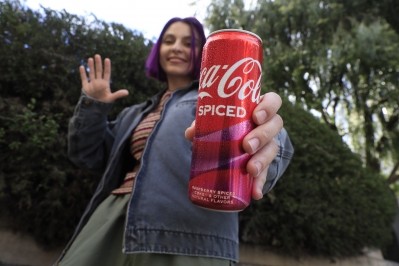Coca-Cola fights ‘flat to modest growth’ in North America with innovation, in-store displays & RGM

“While inflation has moderated and wages continue to trend upward in North America, we are closely monitoring consumer sentiment and traffic trends between at home and away from home consumption,” CEO James Quincey said yesterday during the company’s first quarter earnings call.
He reported, “The US consumer remains in good shape. There is some purchasing power compression in the lower income echelons, and I think it is quite clear that there is some behavioral shifts there looking for value. I think that has led to marginal channel weighting or shift, if you like, with slightly more at home volume versus away from home.”
These shifts, however, are “at the periphery,” he emphasized. “Rather than a big shift,” the company is tracking only “slightly” more value seeking behavior and money saving strategies, including increased at home consumption compared to away from home.
In response, Coca-Cola is “stepping up our [revenue growth management] efforts, our packaging efforts and executing against that so we have continued to gain share in the quarter,” he added.
‘Sometimes the most successful lasting innovation is simply improving’ existing products
Coca-Cola is navigating these shifts and ongoing inflationary volatility in part by “continuing to spin our strategic flywheel faster across total beverage,” which includes a two-prong approach to innovation in which the company simultaneously makes “bigger, bolder bets” and undertakes subtler adjustments to reinforce “beloved brands,” Quincey said.
New product innovations include the recent launch of Minute Maid Zero Sugar in North America, where Coca-Cola tapped influencers, social media and connected commerce activations with customers to drive awareness and excitement.
Part of Coca-Cola’s strategy in making “bigger, bolder bets” is to evaluate their performance critically without setting “artificial strategy objectives,” such as a goal that X% of the business or growth must come from innovation.
“We have a very clear set of metrics on whether [an innovation] is still growing in the fifth quarter after its launch. So, is it cycling itself and continues to accelerate?” Quincey explained.
He added, “We also know that sometimes the most successful lasting innovation is simply improving the taste of existing drinks."
For example, he said, “using our deep in-house flavor expertise and understanding of the science of taste, we have worked to refine the recipes for Fanta and Sprite to meet consumer preferences across many markets. These changes bring new consumers to our brands, as well as remind current consumers what drew them to their favorite beverages in the first place.”
Quincey added the company also continues to explore “non-product based innovation, like new bottle size or can size.”
Ultimately, he said, Coca-Cola approaches innovation “to sell what the consumers want to buy,” rather than “to sell what we make.”
Coca-Cola steps-up in-store displays to ‘inspire transactions’
To support innovation, Coca-Cola also is working closely with partners “to inspire transactions around key events” and with “bigger” in-store displays.
“We are leaning into integrated execution to drive basket incidents and create incremental value for customers,” said Quincey.
Is Coca-Cola’s strategy paying off?
Whether Coca-Cola’s approach to innovation and revenue growth management is paying off is unclear, despite the company reporting a “strong” start to the year.
In the first quarter, Coca-Cola reported $11.3bn in revenue with earnings per share of 72 cents, both of which beat Wall Street estimates of $10.96bn and 70 cents, respectively.
However, most of these gains came from pricing, which increased 13% across segments, and not from unit case volume, which increased only 1%, the company reported.
Gross margins for the quarter, however, were up 130 basis points, and comparable operating margins expanded 60 basis points, the company added.
Looking forward, the company now expects organic revenue growth of 8% to 9% in 2024 and comparable currency neutral earnings per share growth of 11% to 13%.


















